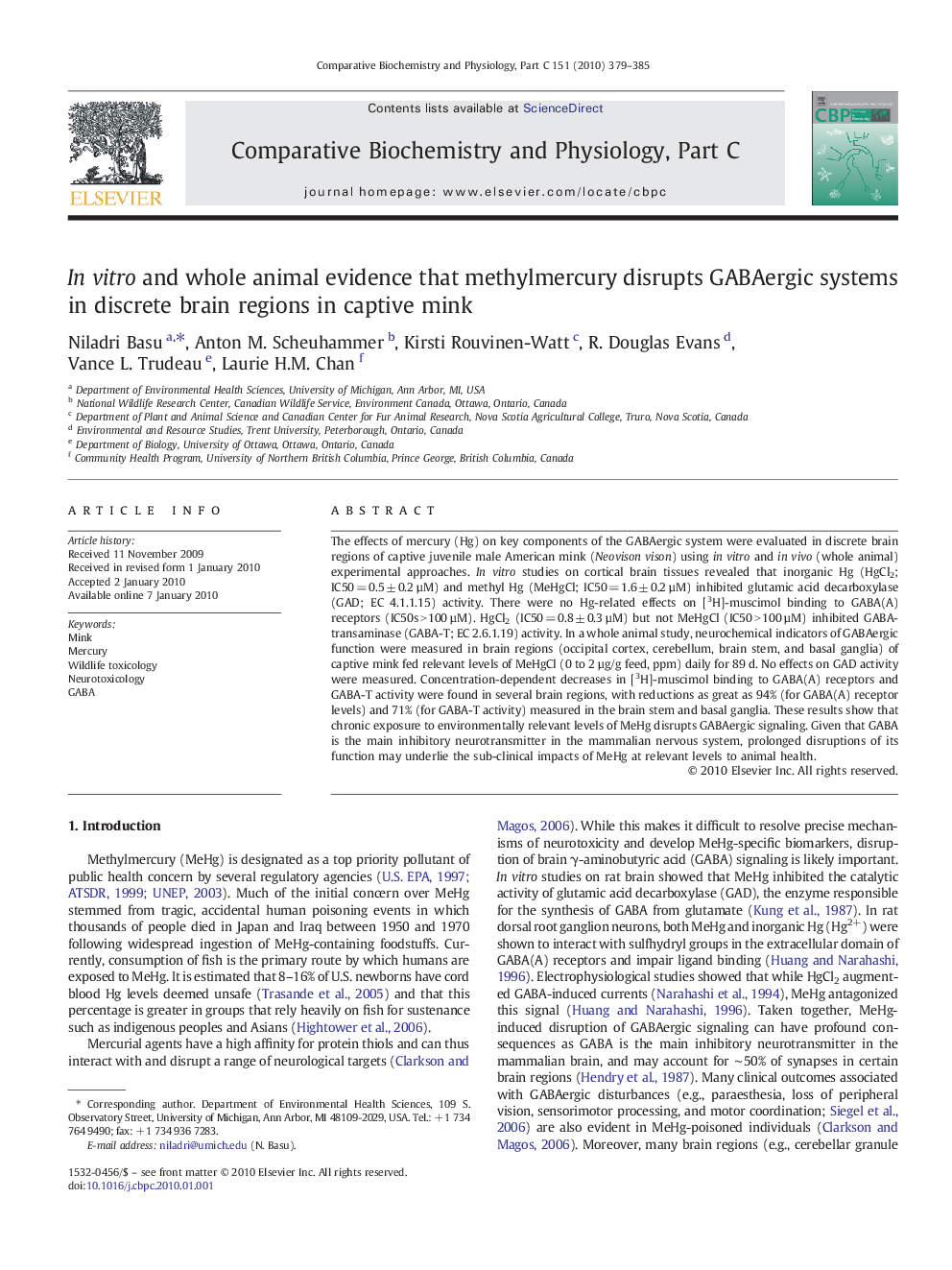| Article ID | Journal | Published Year | Pages | File Type |
|---|---|---|---|---|
| 1977706 | Comparative Biochemistry and Physiology Part C: Toxicology & Pharmacology | 2010 | 7 Pages |
The effects of mercury (Hg) on key components of the GABAergic system were evaluated in discrete brain regions of captive juvenile male American mink (Neovison vison) using in vitro and in vivo (whole animal) experimental approaches. In vitro studies on cortical brain tissues revealed that inorganic Hg (HgCl2; IC50 = 0.5 ± 0.2 µM) and methyl Hg (MeHgCl; IC50 = 1.6 ± 0.2 µM) inhibited glutamic acid decarboxylase (GAD; EC 4.1.1.15) activity. There were no Hg-related effects on [3H]-muscimol binding to GABA(A) receptors (IC50s > 100 µM). HgCl2 (IC50 = 0.8 ± 0.3 µM) but not MeHgCl (IC50 > 100 µM) inhibited GABA-transaminase (GABA-T; EC 2.6.1.19) activity. In a whole animal study, neurochemical indicators of GABAergic function were measured in brain regions (occipital cortex, cerebellum, brain stem, and basal ganglia) of captive mink fed relevant levels of MeHgCl (0 to 2 µg/g feed, ppm) daily for 89 d. No effects on GAD activity were measured. Concentration-dependent decreases in [3H]-muscimol binding to GABA(A) receptors and GABA-T activity were found in several brain regions, with reductions as great as 94% (for GABA(A) receptor levels) and 71% (for GABA-T activity) measured in the brain stem and basal ganglia. These results show that chronic exposure to environmentally relevant levels of MeHg disrupts GABAergic signaling. Given that GABA is the main inhibitory neurotransmitter in the mammalian nervous system, prolonged disruptions of its function may underlie the sub-clinical impacts of MeHg at relevant levels to animal health.
